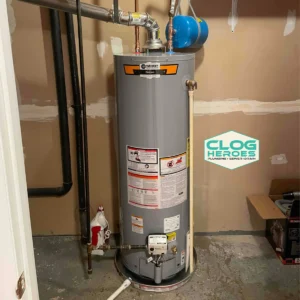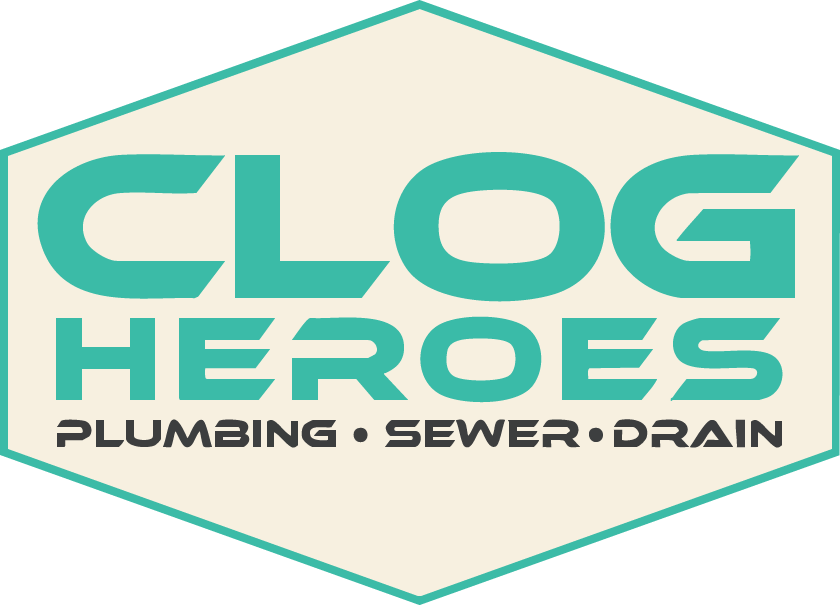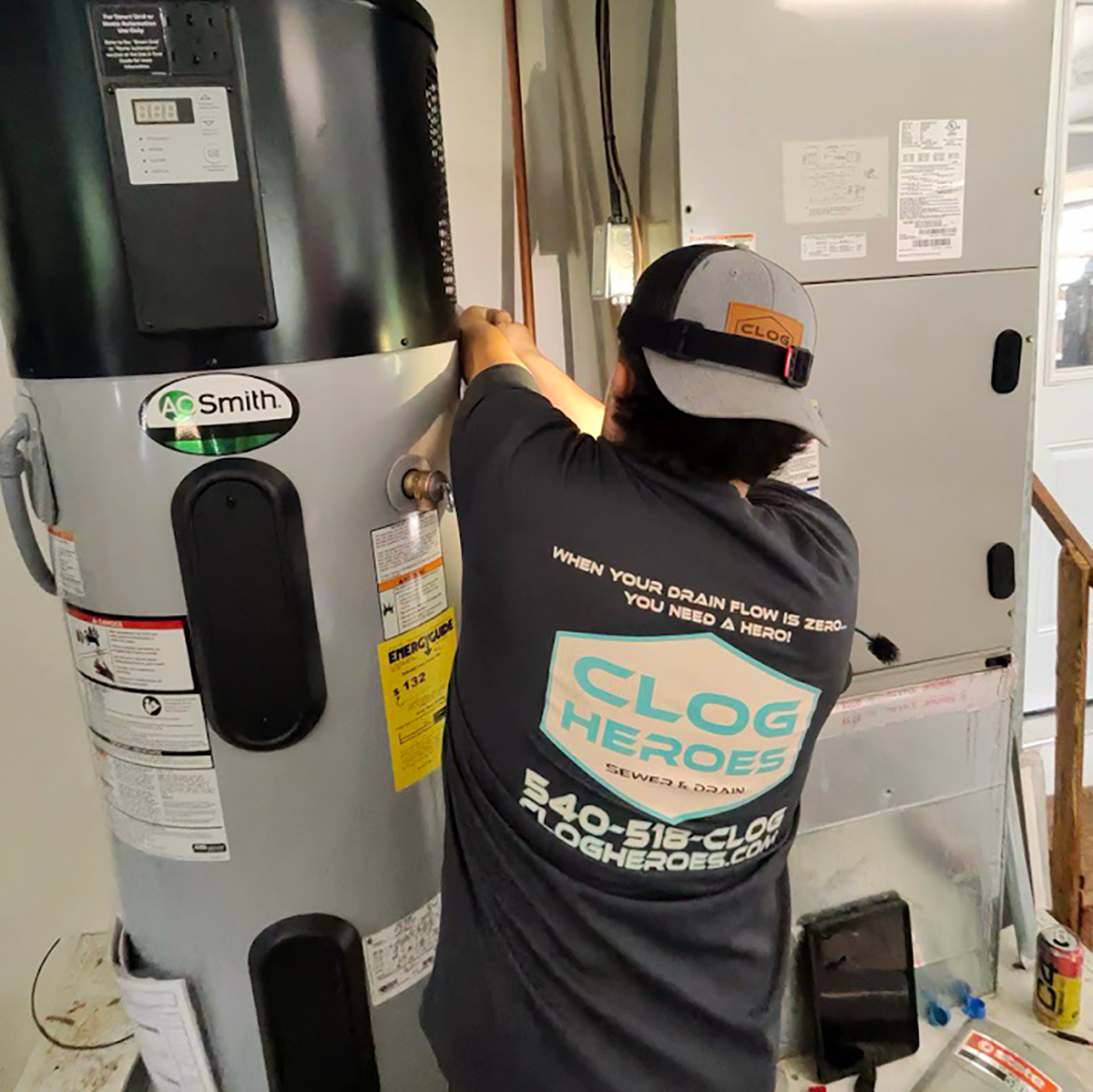Water Heater Pressure Relief Valve Leaking? Fix It Fast
Home /
When you notice your water heater pressure relief valve leaking, it’s easy to panic. After all, that’s not something you see every day—and if you’re like most homeowners, you probably don’t want to see it again anytime soon. At Clog Heroes Plumbing, Sewer & Drain, we get this call more often than you’d think, and honestly, it’s one of those problems that can go from minor to messy in no time if ignored.
Let’s break down why this happens, what it means, and how you can handle it before it gets worse.
What the Water Heater Pressure Relief Valve Actually Does 
That small brass valve mounted near the top of your water heater isn’t there for decoration—it’s a temperature and pressure relief valve (T&P valve). Its job is to keep your tank from building up too much pressure. If the system ever gets too hot or the internal pressure spikes, the valve opens to release a bit of water and stabilize things.
Think of it like your water heater’s “safety release.” Without it, the tank could literally burst under pressure — and trust me, nobody wants a mini geyser in their garage!
Common Reasons for a Water Heater Pressure Relief Valve Leaking
Here’s where most people start to worry. When you see water dripping or pooling near that valve, it could mean several things:
1. When a Water Heater Pressure Relief Valve Leaking Is Normal
Sometimes, a water heater pressure relief valve leaking isn’t a bad sign at all. As your tank heats water, a little expansion is normal. The valve might open briefly to let out excess pressure. If it’s just a few drops now and then, that’s completely normal.
2. High Water Pressure in the Home
If you notice a steady leak, your home’s water pressure might be running too high. When that happens, it’s often a sign you need a plumbing inspection or pressure adjustment to keep things from getting worse.
According to an EPA technical reference, service water pressure should ideally be between 45 and 60 psi to promote efficient home plumbing and reduce stress on fixtures and piping. Anything higher can stress the heater and force the relief valve open.
3. Sediment or Mineral Build-Up
Over time, sediment from hard water can collect inside the tank or the valve itself. That debris can prevent the valve from sealing properly. It’s one of those hidden issues we find during annual maintenance. (And yes, flushing your tank once a year really does help.)
4. A Faulty Valve
Sometimes, the valve itself just wears out. Age, corrosion, and mineral exposure can all weaken its internal spring. If it’s constantly dripping, even with normal pressure levels, it might be time for a replacement.
How to Tell When It’s Time to Replace the Valve
Check to See if Your Water Heater Pressure Relief Valve Is Leaking
First, make sure the leak is truly coming from the valve and not the connections or pipes around it. Sometimes condensation can trick you into thinking the valve is leaking when it’s actually just moisture on the tank.
Inspect for Corrosion or Rust
If you see rust stains, crusty buildup, or consistent drips, that’s your cue. A water heater pressure relief valve leaking with corrosion usually means it’s too far gone to fix.
Listen for Gurgling or Hissing
A faint hissing sound is normal when pressure releases occasionally. But if it’s constant, the valve may be stuck open. That’s when it’s safest to call a licensed plumber before the problem escalates.
Steps to Handle a Water Heater Pressure Relief Valve Leaking Before Calling a Plumber
You can try a couple of small things safely (if you’re comfortable doing so):
Turn off the power to the water heater. (Gas or electric—whichever you have.)
Shut off the cold-water supply going into the heater.
Lift and release the valve lever gently to flush out any debris that might be keeping it from sealing.
If it’s still leaking after that, it’s time for professional help. (Seriously—don’t keep tightening things. That’s how a simple fix becomes a Saturday you’ll regret.)
For homeowners who want to prevent future plumbing issues, the Insurance Institute for Business & Home Safety (IBHS) highlights that proactive maintenance—like inspecting water heaters and valves annually—can significantly reduce the risk of water damage. IBHS provides national guidelines to help protect homes from costly plumbing-related losses.
Preventing Future Leaks
Here’s the truth: most water heater pressure relief valve leaking issues are preventable with regular maintenance. A few simple habits can save you from big headaches later:
Schedule an annual inspection of your water heater and pressure relief valve.
Keep your home’s water pressure regulated. A small pressure-reducing valve can make a big difference.
Flush your tank at least once a year to remove sediment buildup.
Replace the T&P valve every 3–5 years or whenever your plumber recommends.
At Clog Heroes Plumbing, Sewer & Drain, we always tell customers that water heaters don’t last forever, but a little upkeep can make them last a lot longer.
When to Call Clog Heroes for a Water Heater Pressure Relief Valve Leaking
If your water heater pressure relief valve leaking has gone from a slow drip to a steady stream, it’s not something to ignore. That’s your system telling you something’s wrong. Whether it’s high pressure, a faulty valve, or something else entirely, our team can inspect, diagnose, and repair it quickly.
Through our professional water heater services, we handle everything from quick safety valve swaps to full system replacements—whatever it takes to get things working right again. We’ve seen it all—sometimes it’s as simple as a new valve, and sometimes it’s the start of a larger replacement. Either way, we’ll walk you through it honestly.
Contact Clog Heroes Plumbing, Sewer & Drain
Don’t wait for a small leak to turn into water damage. Contact Clog Heroes Plumbing, Sewer & Drain today to schedule service or request an estimate. We’re always here to help homeowners across Fredericksburg, Stafford, and surrounding areas keep their plumbing running smoothly.
If you’ve spotted your water heater pressure relief valve leaking, give us a call at (540) 518-2564 (CLOG) or schedule online. We’ll fix it fast and leave you with one less thing to worry about.

